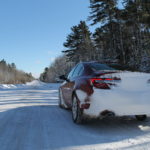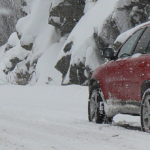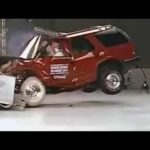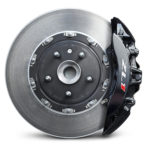Safety First! Springtime is beautiful and promising—but it can be one of the most dangerous seasons for motorists, thanks to fluctuating weather and temperatures, awakening wildlife, unpredictable road conditions, and more. Thankfully, the majority of springtime driving hazards can be defended against by ensuring maximum performance of your ride in 3 key areas: traction, visibility and braking.
3 Important Checks for Springtime Driving Safety
Traction: Traction is grip. Friction. Adherence. It’s the force that keeps your ride on the road, allows your steering and braking systems to do their job, and, hopefully allows your vehicle to properly tackle any emergency maneuvers required on the open road to keep you and yours safe. Maximizing traction is a good idea—especially when springtime temperature fluctuations may compromise grip, and when springtime wildlife may present an increased likelihood that you’ll need confident traction.
Think tires. Remember—your winter tires are designed to work on snow and cold pavement. Once temperatures consistently exceed 7 degrees Celsius, day and night, it’s time to put your all-season rubber back on, since winter tires don’t perform as well when it’s warm out. Note any abnormal wear of your tires, which could indicate a traction-compromising alignment problem, possibly caused by a violent pothole strike. Signs of a bad alignment include heavier wear on one side of one or more tires.

Proper tire inflation is key to traction as well. Not only will an improperly inflated tire reduce traction, it’ll wear out more quickly and burn more gas, too. Your favorite mechanic can swap and inspect your tires and check on your alignment quickly and affordably.
When swapping your tires, be sure to check for cracks, lumps and damage to the treads, and both inner and outer sidewalls, while they’re off of the vehicle. Also, since ozone and light can accelerate tire aging, be sure to bag up that winter rubber and leave it in the garage, if possible.
Visibility: With the possibility of fog, heavy rain, snow, haze and quickly-changing weather conditions day or night, visibility becomes front and centre in springtime driving safety. Be sure your ride provides maximum visibility by checking for burnt headlights, and by replacing rubber-wrapped winter wipers with summer wipers that won’t lift away from the windshield at higher speeds.

Note that headlight bulbs can dim slowly over time—so replacing yours preemptively might be a good idea. Opt for a premium bulb where possible for higher lighting performance, and be certain that the aim is proper. Even a fantastic headlight bulb can appear dim and dark if the aim of your vehicle’s headlight housings is out of whack. Polish, clean or replace hazy or discolored headlight housings, too.
Braking: It’s easy to take your braking system for granted—that is, until a hazard suddenly appears on the road immediately in front of you. If your brakes have been pulsating or squealing, or if your brake pedal feels softer ad mushier than usual, your brake system likely needs some attention. A mechanic can quickly and affordably inspect your vehicles braking system for early detection of wear and problems before they become serious. Note that many newer models have advanced features like Electronic Stability Control and Trailer Sway Control that rely on proper brake system performance for maximum effectiveness.





